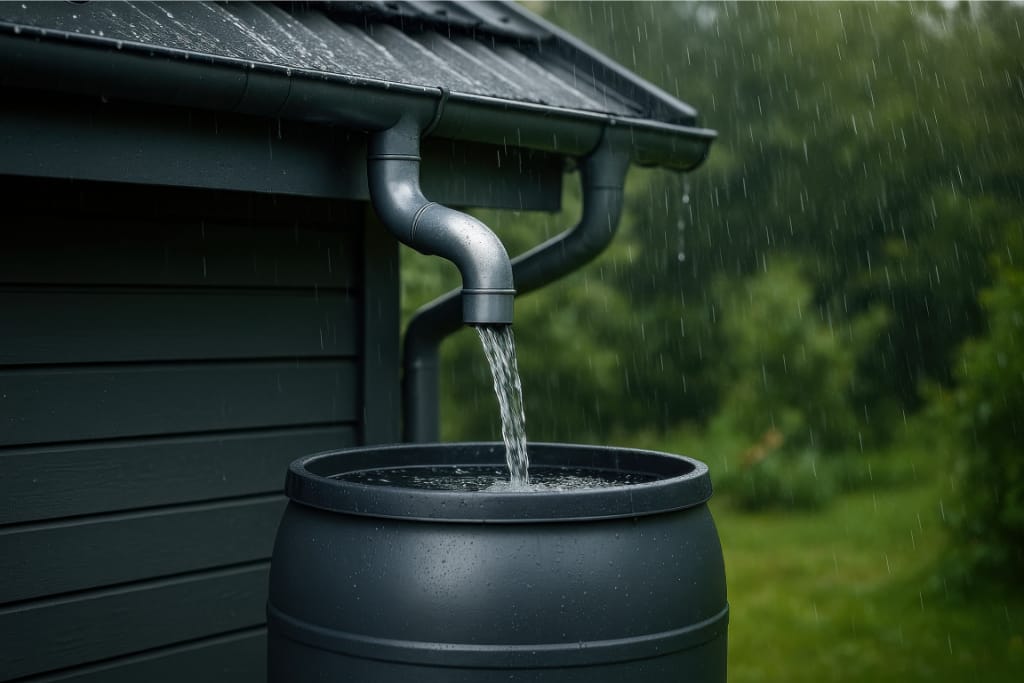Building a more eco-friendly lifestyle doesn’t have to feel overwhelming, expensive, or complicated.
Many of the most meaningful changes start with small shifts in how we consume energy, use resources, and make everyday choices.
When we focus on simple, sustainable habits, we can commit to long-term, we create a lifestyle that’s not only better for the planet but also noticeably easier on our wallets.
The truth is, sustainable living isn’t about perfection. It’s about progress. Every step we take toward reducing waste, cutting unnecessary costs, and using our resources more mindfully creates a ripple effect that benefits our home, our community, and the environment.
And the best part?
These eco-friendly changes often lead to a more intentional, calm, and clutter-free life.
This guide breaks down twelve practical, realistic, budget-friendly habits anyone can adopt.
Each one is designed to help save money while lowering our environmental impact in a way that feels doable—not overwhelming. These habits are rooted in clarity, honesty, and everyday actions that truly make a difference.
Let’s explore how small choices can create big results.
1)) Reduce Energy Use at Home Without Sacrificing Comfort
One of the easiest ways to cut both costs and carbon emissions is by using less energy at home.
This doesn’t mean giving up comfort. It simply means being more mindful of how our appliances and devices use electricity throughout the day.
Start by swapping out old light bulbs for LEDs, which use up to 90% less energy and last dramatically longer.
This single shift can save hundreds of dollars over the years. Unplugging devices when they’re not in use—especially chargers, gaming systems, and countertop appliances—helps avoid phantom power drain, which slowly adds up on the electric bill.
Another simple step: adjust the thermostat. Lowering the heat a couple of degrees in winter or raising the A/C temperature slightly in summer has a noticeable impact on monthly costs. If we’re able, installing a smart thermostat gives even more control.
We can also use habits like washing clothes in cold water, turning off lights when leaving a room, and air-drying clothes when possible. These adjustments cost nothing and create long-term savings.
These sustainable habits work because they’re realistic. They don’t disrupt daily life—they simply make it more efficient.
2)) Cut Down on Single-Use Plastics and Save Money Doing It
Many eco-friendly people want to reduce their waste, but they also want to avoid spending a fortune on trendy “sustainable” products. The truth is, cutting single-use plastics usually saves money rather than spending it.
Instead of buying disposable water bottles, grab a durable reusable one. Instead of constantly purchasing plastic sandwich bags, use reusable containers that last for years.
Swap paper towels for washable microfiber cloths that work just as well. These changes drastically reduce waste and eliminate the need to repeatedly buy disposable items.
Bulk purchasing is another money-saving strategy. Buying foods like rice, beans, nuts, and coffee in bulk reduces packaging and often cuts the cost per ounce significantly.
When we buy only what we actually need, we avoid unnecessary impulse purchases and keep money in our pockets.
These adjustments make the biggest impact when practiced consistently. Over time, these sustainable habits replace wasteful patterns and create a home environment that feels cleaner, simpler, and more intentional.
3)) Plan Meals to Reduce Food Waste and Lower Grocery Costs
Food waste is one of the biggest contributors to unnecessary spending and environmental harm. When food spoils before we use it, we lose both money and resources. A few small habit shifts can prevent that.
Start by planning meals for the week. A simple list helps avoid overbuying and reduces the chances of forgotten produce sitting in the fridge.
Learning to repurpose leftovers is a skill that saves money while also cutting waste—soups, salads, bowls, stir-fries, and wraps are perfect for using up extra ingredients.
Freezing food before it spoils is one of the best tools we have. Bread, fruit, vegetables, herbs, cooked grains, and even dairy can be frozen to extend their life.
It’s also helpful to store foods properly with breathable containers, clear jars, and simple labeling.
These small, sustainable habits create a more organized kitchen, reduce landfill waste, and keep grocery bills lower. When we use what we already have before buying more, the savings become significant.
4)) Choose Transportation Habits That Reduce Fuel Costs and Emissions
Transportation is a major part of the average person’s carbon footprint, but it’s also an area where sustainable habits can save substantial money.
Simple adjustments make a difference:
- Combine errands to reduce unnecessary trips.
- Use public transportation when possible.
- Carpool to work or events.
- Walk or bike shorter distances.
- Keep tires properly inflated to improve fuel efficiency.
Proper car maintenance—regular oil changes, clean air filters, and correctly inflated tires—reduces emissions and extends the life of the vehicle.
Fuel-efficient driving techniques like gentle acceleration, maintaining consistent speeds, and avoiding excessive idling create ongoing savings.
Even if switching to an electric vehicle isn’t in the budget, these low-effort habits help us reduce our environmental impact and cut monthly fuel costs in a meaningful way.
5)) Conserve Water Through Simple, Everyday Choices
Water conservation is often easier than people expect. Simple habits have the biggest impact.
Turning off the faucet while brushing teeth, fixing minor leaks quickly, and shortening showers by just a few minutes save gallons every day.
Installing low-flow showerheads and faucet aerators is inexpensive and reduces water use without affecting comfort.
Using the dishwasher instead of handwashing can also save both water and energy, especially when the dishwasher is full.
Collecting rainwater using rainwater barrels for plants and choosing drought-resistant landscaping also helps reduce outdoor water usage.
These habits not only cut utility bills but also protect local water resources, making them a powerful combination of eco-friendly living and budgeting.
6)) Purchase Second-Hand Whenever Possible to Reduce Waste and Spending
Buying second-hand items is one of the most effective ways to reduce consumption while saving money.
Thrift stores, yard sales, online marketplaces, and local buy-nothing groups offer high-quality items at significantly lower prices than buying new.
Eco-friendly shoppers often gravitate toward second-hand furniture, clothing, home goods, books, and tools.
Not only does this keep items out of landfills, but it also reduces the need for new manufacturing, which is energy-intensive and resource-heavy.
Second-hand shopping also encourages us to choose quality over quantity. When we focus on well-made items, we buy less over time and avoid cheaply made goods that break easily and require frequent replacement.
This sustainable habit supports the planet and dramatically reduces household expenses.
7)) Practice Minimalism to Reduce Clutter, Costs, and Consumption
Minimalism isn’t about getting rid of everything. It’s about choosing what truly adds value to our lives.
When we buy only what we need and avoid unnecessary purchases, it leads to lower expenses and less environmental impact.
This habit is especially powerful for eco-friendly individuals who want to reduce their footprint. Every product we don’t buy saves resources, reduces emissions, and prevents future waste.
Minimalism also creates space—physically and mentally. A clutter-free home feels calmer, easier to clean, and more enjoyable to live in.
And when we don’t feel compelled to chase the newest trends or impulse buys, we keep more money in our bank account.
These sustainable habits help us break out of the cycle of overconsumption and create lifestyles rooted in intention and simplicity.
8)) Grow Herbs or Produce at Home for Fresh, Low-Cost Food
Growing our own food is one of the most satisfying and sustainable habits we can adopt.
Even small-scale gardening—like growing herbs on a windowsill or a few vegetables in containers—offers fresh produce for a fraction of the store-bought cost.
Easy herbs like basil, mint, parsley, and rosemary are perfect for beginners.
They’re hardy, forgiving, and add flavor to meals without constant grocery purchases.
Growing greens like lettuce, spinach, or microgreens saves money and reduces the need for plastic packaging.
In larger spaces, vegetable gardens and fruit trees can significantly cut grocery expenses.
Composting food scraps to enrich soil creates a full circle of sustainability that reduces waste and produces nutrient-rich soil for free.
No matter the scale, home gardening supports eco-friendly living and provides fresh, healthy food without the carbon footprint of transportation and packaging.
9)) Use Eco-Friendly Cleaning Methods to Save Money and Reduce Chemicals
Many traditional cleaning products contain harsh chemicals that are harmful to the environment and expensive to replace. Simple, eco-friendly alternatives work just as well and cost much less.
Vinegar, baking soda, lemon, castile soap, and essential oils can handle most cleaning tasks without toxic residues.
These ingredients last longer, cost less, and eliminate the need for dozens of single-purpose cleaners.
Choosing refillable cleaning solutions is another sustainable habit that reduces plastic waste. Refillable glass bottles and concentrated tablets save money because we’re not constantly paying for new bottles.
This approach keeps homes fresher, air quality cleaner, and the environment a little safer.
10)) Switch to Digital When Possible to Reduce Paper Waste
Paper clutter builds quickly—mail, receipts, forms, planners, and documents pile up over time. Switching to digital storage reduces this clutter and cuts down on paper waste.
Digital planners, e-receipts, paperless billing, and cloud storage help streamline life and make information easier to access. These choices also reduce the need for printing, ink, and physical storage materials.
This habit is simple and cost-effective, and it prevents unnecessary waste from entering landfills.
11)) Repair, Upcycle, and Repurpose Instead of Replacing
One of the most budget-friendly and eco-friendly habits is repairing what we already own.
Fixing a torn seam, tightening a loose screw, or repairing a broken zipper costs far less than buying a new item.
Upcycling takes this idea further—turning old items into new, functional pieces. Glass jars become storage containers, old T-shirts become cleaning cloths, and worn furniture gets new life with a fresh coat of paint.
Repurposing encourages creativity and reduces the constant need for new products, lowering our environmental footprint and cutting household costs.
12)) Track Progress to Stay Motivated and Create Lasting Habits
When we’re building sustainable habits, tracking our progress helps keep motivation high.
Simple methods—digital apps, note-taking, checklists, monthly goals, or habit trackers—give us a clear picture of improvement.
Tracking energy bills, grocery waste, or transportation miles can inspire continued effort because we can see the results. It also helps highlight areas where we can improve without feeling overwhelmed.
This step makes the journey toward eco-friendly living feel rewarding, intentional, and long-term.
Conclusion
Sustainable living doesn’t need to be complicated or expensive. When we focus on small, realistic changes, we build habits that last.
These choices save money, reduce waste, and help protect the planet for future generations.
The key is to start where we are. Choose one or two habits that feel achievable and build from there.
As these sustainable habits become second nature, we create a lifestyle that supports our health, our finances, and the environment in meaningful ways.
If we approach sustainability with simplicity, honesty, and consistency, we’ll always move in the right direction.
Download Our Free E-book!






